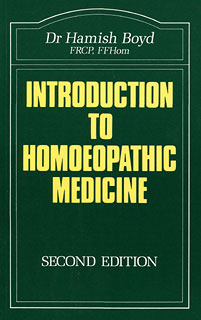A clearly laid out and well presented book, which provides a systematic introduction to the principles of homeopathic medicine. Different methodologies of past and present homeopaths are presented and fifty-five of the most important remedies are described in detail.
The only formal textbook in the field, written in categories that are familiar to the medical practitioner.
The publisher:
In what important ways is homoeopathy different from conventional medicine? What is meant by 'the homoeopathic approach'? What is the homoeopath's concept of chronic disease? How does homoeopathic case-taking differ from conventional case-taking? Which are the remedies you need to know in detail, and how do you prescribe them?
This book provides a systematic introduction to the principles of homoeopathic medicine. It shows how the homoeopath's selection of a remedy is based on a process that goes beyond the diagnosis of a particular condition to a perception of the patient as a whole and individual person.
The homoeopathic materia medica is discussed in relation to the systems of the body and the patient's presenting complaints, in a framework that will be familiar to any doctor. The author uses this framework to describe the subsequent management of the patient in homoeopathic terms. He describes the clinical conditions in which homoeopathy is particularly useful, and those where conventional treatment is likely to be necessary, as well as the circumstances where orthodox medicine and homoeopathic medicine can fruitfully be used in conjunction with one another.
The symptom pictures of fifty-five of the most important remedies are then described in detail, offering the reader a sufficient basis on which to introduce them into his or her own practice. Dr Margaret Tyler's valuable 'Study of Kent's Repertory' is given as an Appendix.
Dr Hamish Boyd qualified MB,ChB at Glasgow University in 1947. He continued with studies in paediatrics in Glasgow and Liverpool, gaining the Diploma in Child Health. He followed this with further posts in general medicine and respiratory medicine, and obtained his MRCP (Glasgow). He then started work as a principal in general practice, while beginning to study homoeopathy at the Glasgow Homoeopathic Hospital. He now holds the position of Medical Superintendent and Senior Consultant at that hospital. He is a past-President and now Dean of the British Faculty of Homoeopathy. He was elected FRCP (Glasgow) in 1977.
 Wishlist
Wishlist






